tl;dr: Â If we want to see the metaverse happen in our lifetime, we need to invest our time, money, creativity, and resources into making it happen. Â It isn’t going to come from Second Life or Linden Lab, and the metaverse can’t wait.
Five or six years ago, you could not have found a more enthusiastic and engaged supporter of the Second Life platform than me. Like many, I was inspired by the technology itself and especially by the vision of a company who promised us a new world built from our imaginations. Back then, the leadership of Second Life actually said things like “I’m not building a game. I’m building a new country.” (I love that Gwyn keeps that quote from Philip Rosedale in her sig line.) While I was always skeptical about that “new country” bit, I was completely and passionately in love with the idea that we were creating a new world – a new KIND of world – that exploded with possibilities and opportunities for those who were open to learning how to use them.
I’d read Snow Crash too, of course, and it wasn’t just the idea of Second Life itself that excited me, but rather the idea that Second Life was a seed, a prototype, a very rough but crucially important first step towards the creation of an open metaverse. Even back then, my imagination supplied me with a thrilling vision of what the metaverse could become. I could see it in my mind’s eye, this online incredibly complex 3D universe of people, places, and things, of not just one new world, but many new worlds, connected to one another, traversable with our digital bodies, varied and wonderful and full of commerce, educational opportunities, entertainment, creativity, and all the magical things that we could collectively unleash from our imaginations. The metaverse would be the next iteration of the net and the web, moving from flat, mostly static, two dimensional pages to dynamic, live, and action oriented 3D online places.
Most exciting to me, this digital variation of our physical universe would not be limited by so many things that constrain us in the physical world – lack of capital, limits on consumable resources, the difficulties of physical distance, and the incredibly stale and inflexible institutions and legal structures that are cracking and groaning and failing to adapt even to the exigencies of the real world, forget being able to address the digital world. Â It wouldn’t take millions of dollars to build a company headquarters in the metaverse, no need for lumber and concrete either – pixels are limitless. And it wouldn’t matter if your colleagues lived in Dubai or Dublin or Dallas, you could still work together side by side in a virtual space and collaborate on a shared design in real time, in some ways better even than you could in the real world. And maybe, just maybe, all that plasticity and the ability to visualize things in new ways would help us discover new angles to solving intractable old real world problems, too.
I became absolutely convinced that those of us pioneering these new digital worlds would have the opportunity to do better in the virtual worlds we create than has been done in the real world we inherited, and that we could learn from our experiences in virtual worlds to make the real world a better place, too.
And in those early days, forget the technology or the company or the leadership at the helm, the most wonderful thing about Second Life back then is that I kept meeting people who were thinking the same thing. Logging into Second Life was like mainlining a drug, everywhere you teleported, you might just bump into someone brilliant, thoughtful, someone as excited about the possibilities as you were. Everywhere you looked were fascinating projects: scientists playing with visualizing data, artists creating experiences that were just not possible in real life, regular everyday people starting new businesses and finding financial success, professors and educators holding classes in the clouds and building a community of practice that made even the most isolated innovator in some corner of the physical world feel like they had finally found the colleagues and collaborators of their dreams.
Everywhere you looked was innovation.
Everyone you met was experimenting, trying new things, pushing new boundaries.
Anything seemed possible. Â Maybe even probable.
I became so inspired, so excited by the possibilities that it quite literally changed my life. Trying to understand this prototype of the metaverse, and figuring out how to achieve those goals became the focus of my career.  I was travelling all over the US speaking about Second Life and the metaverse at conferences and lectures, and I was deeply engaged in my own projects in-world, too. Learning not just how to twist a pile of prims into something beautiful, but how that pile of prims could be used to facilitate a community like Chilbo, a classroom at my university, or bring people together for a conference like SLBPE or SLCC. The more I learned, the more sure I became that great things were possible because this rough little prototype of the metaverse had already enriched and changed my life for the better – I was quite certain it could change other people’s lives for the better, too.
I had a vision of the future and I worked very damned hard to help bring it to life, not in isolation, but with thousands of other people who were working hard to do the same thing. And the most wonderful part was that we had found each other, from all corners of the physical world, we discovered in each other a passion for making the metaverse a reality.
It was an exciting, heady time. I miss those days. And if you were one of those people, I bet you do, too.
That Was Then, This is Now
The road from there to here has been an interesting one. I was incredibly lucky that my personal circumstances and the university where I work gave me the space, time, and resources to dive deep into the topic. I spent the next several years fully engaged in the work, the space, the people, the projects, the platforms. I’ve read hundreds of academic articles, thousands of blog posts and news stories and editorials. I’ve had the opportunity to work on so many fantastically interesting projects, I’ve organized conferences and participated in scores of events to bring people who share this passion together in real life and virtually, and I’ve explored as many worlds and spaces as time has allowed to see what others are doing too.
And while there will always be someone more technically gifted than me, more knowledgeable, more connected.. I think it is fair to say I’ve developed some expertise in this topic, some genuine experience in understanding how and when a virtual world application makes sense and when it doesn’t, what the challenges and opportunities are, and some inklings of what the future may hold now that I’m not just wide-eyed with wonder, but seasoned by the trials and tribulations of not just starting projects in the fledgling metaverse, but leading them, staffing them, maintaining them, supporting them, marketing them, and finishing them. To be sure, some of my youthful naivete has departed, but I’d like to think it’s left some wisdom in its place, and here is what the view looks like to me now.
It would be fair to say that no single company or single platform could ever have lived up to the kinds of expectations that I described in the beginning of this post. Linden Lab and Second Life could never be all things to all people, and I give them credit for even trying to address the needs of so many diverse use cases and such a passionately vocal and creative userbase. And I do believe that they tried. For a very long time, I think they did try, sincerely and genuinely, to help bring the visions of Second Life’s residents to life. I personally worked with many folks from the Lab who were as passionate and committed as I was, and who tried their best to facilitate the projects and events that I worked on.
And while they were of course always working for Linden Lab and had to keep the company’s interests in mind, there were hints that some of the folks at Linden Lab also shared our passion for the metaverse itself, beyond Second Life. For a time, there seemed to be at least the possibility that Linden Lab might grow into a larger role, not just serving as a provider of a world called Second Life, but maybe they could become a steward of that burgeoning metaverse, sharing their technology with others in service of that broader goal in a “rising tide lifts all boats” kind of way. Before so many brilliant engineers and thinkers left the Lab, they took concrete steps in that direction, even – they open sourced the viewer code, they participated in research with IBM to test inter-world teleports, and when Philip spoke to us, the residents, he painted that kind of picture. This was not a game. This was about changing the world, real and virtual.
That was Linden Lab then. That is not Linden Lab now.
The Metaverse Will Not Come From Linden Lab or Second Life
I still see the Second Life platform as that first crucial step towards the metaverse, but anyone with two eyes in her head can see that it’s been many years and many changes in management since there was even a hope that Second Life itself would be anything but one world whose sole purpose is to make one company a profit. Linden Lab isn’t even a publicly traded company, for that matter, so we who have invested countless hours, poured thousands and thousands of dollars, staked our reputations and careers, and devoted our creativity and passions to the Second Life platform – we who made Second Life what it is – we can’t even see into the black box a tiny little bit. In truth, we don’t own even a tiny piece of this thing that we helped create.
It has always been that way, of course, even back in the beginning. But back then I also had some.. let’s call it faith, that the people in charge at Linden Lab shared at least some small part of the same vision that I had. Even if they went about it differently than I would do, or chose to prioritize different things than I would have chosen, I had some faith that both we the residents and Linden Lab the company were in some way working in concert with one another. At times it was discordant, and cacophonous, and certainly chaotic, but what complicated and pioneering endeavor isn’t?
And don’t forget, I was seeing these people, in person, at events and conferences all over the country.  I could look into their eyes and see my own passions reflected in them, and that sustained me even when I disagreed, sometimes vehemently, with their decisions and choices. They were good people making a good faith effort to do something good, and I was willing to endure all manner of inconveniences, indignities, and even embarrassingly horrible failures in the middle of important-to-my-career presentations, all because I felt that good faith effort deserved my patience and my loyalty.
I do not feel that way anymore. You shouldn’t either. It’s not because Linden Lab has become Evil or something silly like that (though I’ve long and often thought the dictionary definition of “mismanagement” should include their company logo), but simply because their priorities are no longer our priorities – not even close. If there was any question, the recent announcement about adding Second Life to Steam should put that doubt to rest. Linden Lab is pivoting, as they like to say in start-up land, and they’re pivoting to gamers. They’re no more interested in expanding or creating the metaverse than EA or Blizzard is, the only world changing thing they are aiming for now is better monetization of the entertainment and virtual goods sector.
Now don’t get me wrong, there’s nothing wrong with gaming – I am a gamer myself, and unlike Prokofy, I don’t think all gamers are idiots or griefers. I have a Steam account and play lots of games on there, and right this moment, I’m anxiously anticipating this weekend’s release of Guild Wars 2 like I haven’t looked forward to a new game in a long time (I’m going to start a guild if I can’t find one, come join me!). And a bit ironically given my last professional experience with Linden Lab, I actually like what I’ve seen of Rod Humble the person; he seems genuine and thoughtful and deeply knowledgeable about the game industry. I look forward to seeing what the newly re-focused Linden Lab comes up with, and I hope it is entertaining and interesting and successful. I’ll even hope that it continues to push the envelope technologically.
But game worlds are not the metaverse. They don’t want to be the metaverse, or participate in the metaverse, or have anything to do with an online universe where people can travel freely, create freely, start their own companies, or do their own thing. Game worlds are about sucking us into someone else’s world, where they endeavor to create an entertainment experience that is so enthralling that we willingly fork over cash to keep experiencing it. Which is great, sometimes really great, and fun and addicting and all that good stuff. But any game experience, no matter how thrilling, pales in comparison to what we who have lived in the fledgling metaverse know is possible, what we know could be possible if the kinds of resources, talent, technology, and effort that currently gets invested in game worlds were to be invested in the metaverse instead.
The thing is, once you’ve made your own world, you can never go back to being satisfied only playing in other people’s worlds. Or at least that’s the way it is for me.
Now someone out there is going to argue that it’s not like Linden Lab is going to turn Second Life into WoW or something, that they are at least trying to pivot to something of a hybrid between game worlds and virtual worlds. That seems to be what Gwyn thinks, and I’ll agree that there’s truth to that, but it’s important to remember that virtual worlds are not the metaverse either. Virtual worlds are some step before the metaverse, before we figure out how to connect everything up. It’s another intermediary step, and while we’re working on learning how do that, we can’t lose sight of the bigger picture. Whatever hybrid Linden Lab intends to make, they’ve signaled very strongly that they are simply not interested in having their virtual world participate in any of this metaverse stuff at all.
Which means for those of us who want to see the metaverse become a reality in our lifetimes, their goals are not our goals. Their priorities are not our priorities. The metaverse is not going to grow out of Linden Lab or Second Life, it’s that simple.
But I Can’t Leave My Inventory! Â And My Friends! Â And My Awesome Builds!
Does this mean you have to leave Second Life? No of course not, even I haven’t done that. I still have projects for work in Second Life and though Chilbo has changed to a mostly private landowner model, we’re still there and I still have a strong connection to my friends, colleagues, and communities in Second Life.
But I have tiered down, way down, and I have begun to invest my time and money largely elsewhere – in Opensim, in Unity, in exploring other nascent platforms and technologies that might be a step in the metaverse direction. I think if you care at all about making the metaverse a reality, that’s what you should do, too, and there are several reasons why:
The first reason is that Second Life is not a safe place or a good place to store your work. At some point, maybe not this year, maybe not even next year, but at some point you will have the epiphany that you have poured your creativity into a very, very fragile jar that is held by someone who does not give one hoot that they hold your most precious efforts in their hands. Worse, you will also realize that you have paid a ridiculously high price to have your creativity held in a jar owned by someone else. Worse still, it will break your heart when they drop the jar and all your effort shatters into a million pieces that you can’t easily pick up, if at all. (Ask the educational community, they will tell you.)
Imagine you are writing that novel you’ve always dreamed of writing, the novel that will change the world. And it’s early on in the development of software for writing novels, so there are only one or two platforms that allow you to even do it. One of the downsides of these early platforms is, you can only ever work on your novel on their servers, and the only copy that exists of your novel only exists on their servers. But hey, there aren’t any other good options out there, so you dive in, pouring your heart and soul into writing the best novel you can.
The more you add to your novel, as the years pass, the more attached you become, until one day something terrible happens. You lose your job, or you get sick, or the stock market crashes, whatever the reason, suddenly you can’t afford to pay for access to your novel. And just like that, all that work, all that effort, gone in a blink. Or one day the company changes its mind and decides it doesn’t even want to host novels anymore, novels are not their target market now, who needs these novel writing people! And just like that, all that work, all that effort, gone in a blink.
How many writers would choose to write their novel on a platform like that? None. NO ONE. Only someone insane would choose to do that. Only someone deluded would choose to do that and pay through the nose for the privilege once there were other options available.
Unfortunately, you sometimes pay a really high price for being an early adopter. Back then, Second Life was the only virtual world game in town, and you didn’t have any choices. That is no longer the case. Â Linden Lab should allow you to make a copy of your work, but they don’t. And to continue the analogy, they don’t want to give you a copy of your novel because they need you to keep paying the hostage fees to access it.
My advice is: Stop being a hostage. Or at least stop being blind to it. And think about what it means for Linden Lab to decide for you, for us, whether we can have a copy of our own stories.
The second reason you need to shift your focus elsewhere is because other platforms need your passion and your creativity and your help. We all benefit when there are choices, when there are options, and when there is a healthy ecosystem of competition. Five years ago I would have guessed there would be many platform choices by now, but there aren’t, and it’s my fault. And your fault. We’ve remained so focused on one platform that we’ve allowed the virtual world ecosystem to atrophy to the point where you could hardly even say there is an ecosystem at all. And that’s bad – for businesses, for educators, for artists, it’s bad for virtual worlds, and it’s bad for the metaverse to come.
We need there to be a million laboratories and experiments happening, we need to have different options for different use cases, and we need to continue to grow the virtual worlds and metaverse “space” even if it isn’t the hot media darling it once was. In fact, we need to do it especially because it is not the hot media darling it once was. All those VCs and angel investors looking to drop a few million bucks on the hot new thing are so wrapped up in mobile and tablets and whatnot that the metaverse doesn’t stand a chance in hell of getting attention from anyone but the people who passionately believe in it. That’s us.
And what we lack in monetary capital we make up for in intellectual capital and the patience and perseverance to click through fifty bazillion checkboxes if that’s what it takes to figure out how to do something. We are not deterred by horrible user interfaces and inconvenient re-starts, by constant patching and broken viewers. We have put up with more trials and tribulations to make our visions a reality in Second Life than obviously most sane people were willing to do – so what is holding us back from moving beyond Second Life to continue to grow the space? I can’t believe it’s because it’s too hard, SECOND LIFE IS TOO HARD, for god’s sake.  Still!  After all these years, it still takes a ridiculous amount of effort to do anything in Second Life. So I don’t buy the difficulty argument, or the lack of features argument. That’s baloney.
No, other things are holding us back, and mostly I think it is that we’ve forgotten the vision. Well, remember it. Think back, remember what you hoped for, and let that sustain you as you move beyond Second Life to explore and help create new worlds that desperately need people like us to invest our time and talents into growing the virtual worlds and metaverse of tomorrow.
My advice: The single easiest thing for you to do is to begin with Opensim. Forget what you’ve heard or read about Opensim, forget all the frothing over content theft and copybots, and forget whatever experience you had with Opensim a few years ago. Opensim (and by extension OSGrid) Â is the closest thing to what Second Life should have become, could have become if the Cory Ondrejka’s of the Lab hadn’t left. The only thing it doesn’t have is the monetary capital that Linden Lab has squandered in bad management and bad decisions, and the intellectual capital required to hit that tipping point of adoption necessary for there to be “enough” people using it to find the collaborators, content, and creativity that you need for your projects.
I’ll save a big treatise on Opensim for another day. It isn’t perfect, and it has its own set of issues, but it is actually more stable and more feature rich than Second Life in many ways, and any excuses that it’s too hard or too confusing fall upon my deaf ears. It isn’t. Stop making excuses. If you care about virtual worlds and the metaverse, you need to be taking at least some portion of your time, money, and efforts from Second Life and investing it in Opensim instead. You’ll be able to put all the years you’ve spent learning Second Life to good use, since it’s not like learning a completely different platform from the ground up, and you’ll be contributing to a community of people who deeply care about the future of the metaverse. Heck, you need to get into Opensim if for no other reason than you will learn more about Second Life than you ever have in all your years on the main grid.
Most importantly, Opensim’s whole raison d’etre is about growing the virtual worlds and metaverse space. Unlike Linden Lab, who have chosen to keep their one world for their profit, Opensim is all about your world, your imagination – quite literally, you can run your own world. (And you should, even as just a learning exercise. I’ll help you personally if you want to try, and if you haven’t, go visit my little personal world FleepGrid.)  I think you might be amazed at what you find, especially in the open hypergrid personal worlds rather than the InWorldz and SpotOn3D closed worlds, who, just like Second Life, want to be one world for their own profit*. Skip those and seek out the smaller grids and open grids and find your passion for the metaverse rekindled.
(* I can already hear Prokofy’s rebuttal ringing in my ears. I am not saying that for-profit projects or motivations are bad, in fact I think they can be good, and they are definitely necessary. I’m merely pointing out that some people are motivated by things other than profit, and I’m primarily addressing the audience of readers who, like me, are in that group. Call us naive do-gooders, or copyleft crazies, but we also contribute many good and meaningful things to the space and have a right to seek out like-minded projects and people.)
The third, and most important reason, you need to move beyond Second Life is because we’re getting old, and the metaverse can’t wait. Some time ago I came across an interview with Philip Rosedale where he said something about how he’d spent his 30’s doing Second Life and it was time to move on. It struck me because, while I’m a little younger than he is, I’ve now spent the majority of my 30’s working in this space, too, and in that time I’ve developed both a better understanding of just how long it can take for a technology to mature and just how intractable some of the technical and social barriers we face are.  Making the Metaverse might not be rocket science, but it isn’t easy either, and we still have a ton of work to do.  We have a lot of technical problems to solve, for sure, but we also have a lot of cultural work to do, and in my opinion, the cultural and social stuff is actually harder.  I can teach anyone how to click through a menu, it’s much more difficult to teach them why they should want to.
It’s going on 20 years since I discovered this thing called the internet, and from those very early days, I’ve always felt my personal talents lie in the ability to bridge gaps between different groups of technology users – to play the role of a translator.  Back in the 90’s when my role was primarily tech-support, I translated programmers’ intentions to end-users, and end-users’ needs to programmers.  Then in the early 2000’s when I was teaching workshops about using technology in education, I translated Gen-X/Y students’ behaviors for Baby Boomer faculty, and vice-versa.  These days, I find myself trying to translate to those living with today’s technology what we who have lived with tomorrow’s technology have learned, and at times it’s an immensely frustrating experience.  But equally frustrating is the stagnation I see even among those I admire and respect, who seem to have lost a little bit of that edge, that desire, to see more, much more, than mesh, and pathfinding, and whatever new shiny thing Linden Lab has bolted onto the same old broken chassis.
When I think back to where I started, I would have predicted we’d be much, much further along the road to the metaverse today than we actually are. Â I’d have expected not just incremental improvements in tools, but whole new revolutions in how we translate our visions into pixels. Â That hasn’t happened as much as I’d have liked. Â I’d have thought that culturally, more people would be able to see and appreciate the benefits that virtual reality provides and would have embraced the opportunity to take advantage of it. Â Surprisingly, people’s imaginations are more limited than I’d have guessed (including my own), and while we have seen things like Facebook and Twitter adopted more broadly, those are still flat, largely textual pages, not places to explore and experience together. Â They are just iterations of the first webpage I saw back in the early 90s, not the revolution that Second Life once was, not the revolution that the metaverse needs to be.
Which brings me back to the whole game thing. Â Back when Philip ran the Lab, Second Life was not a game. Under Rod’s leadership, a game is exactly what he’s trying to turn it into.
My advice is:  If you want to see the metaverse we imagined, then stop playing the perpetual hoping and waiting game that Second Life is. Because if there’s one thing I’m sure of, it’s that the metaverse won’t spring forth from hoping and waiting.
Update:  I had a super busy week at work, so I’m still stewing and thinking about all of the comments.  In the meantime, I wanted to add links to the various responses and side discussions that were posted elsewhere both for myself and for other interested readers.  Many thanks to all for the food for thought!  (Please let me know if I missed any, too!)



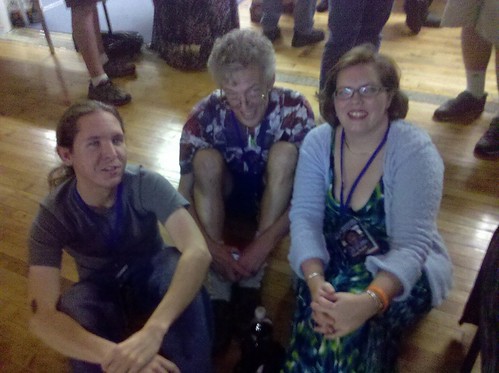
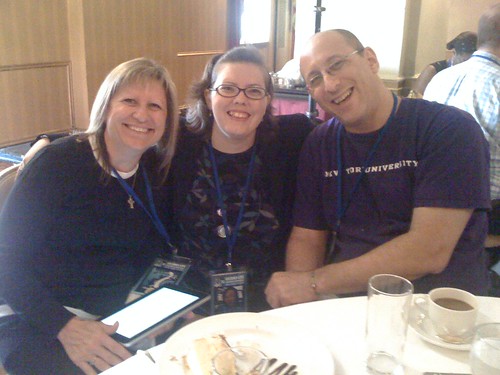
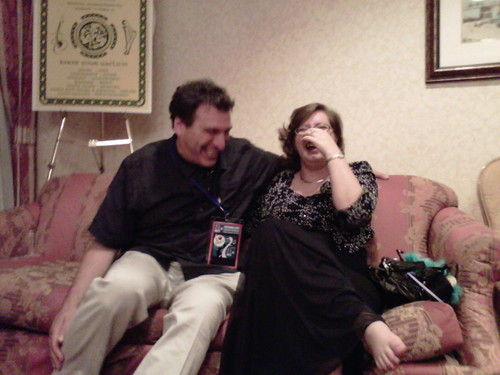

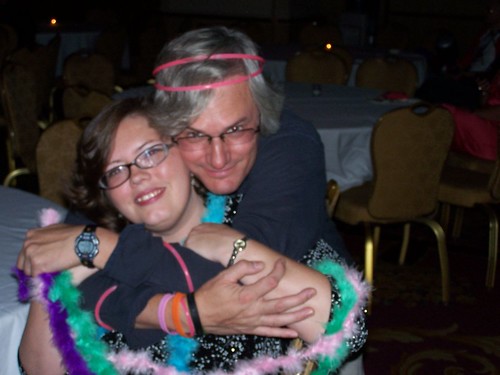



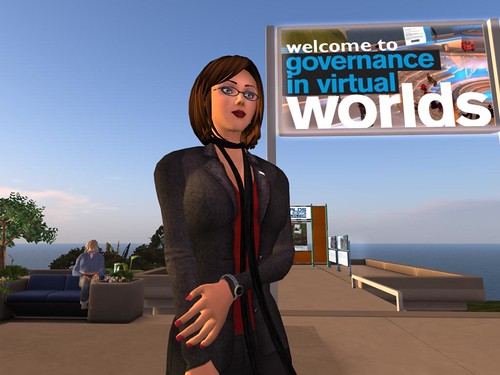 irtual worlds, and not enough time thinking about how the rules of virtual worlds would be horrific if implemented in RL. Good point! From my quickly jotted notes as he was speaking:
irtual worlds, and not enough time thinking about how the rules of virtual worlds would be horrific if implemented in RL. Good point! From my quickly jotted notes as he was speaking:
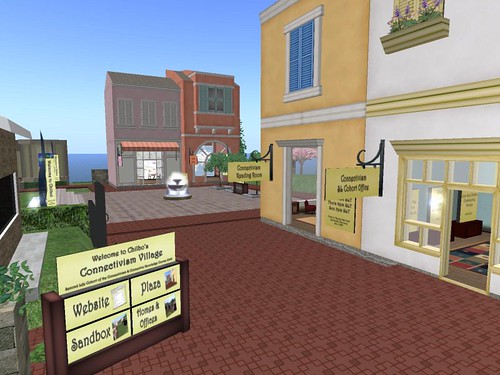
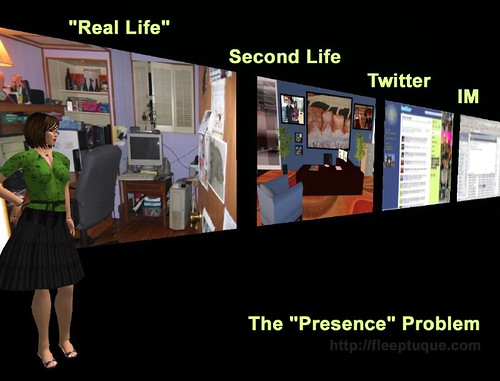
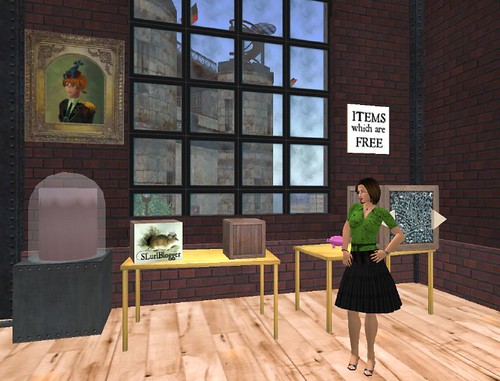
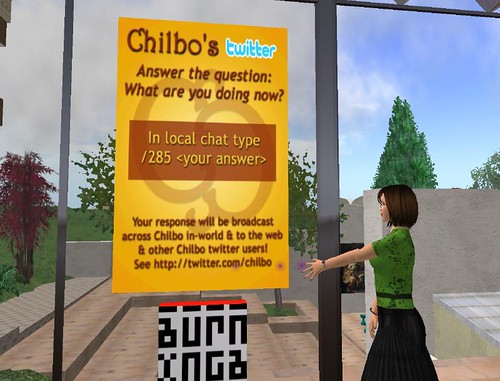
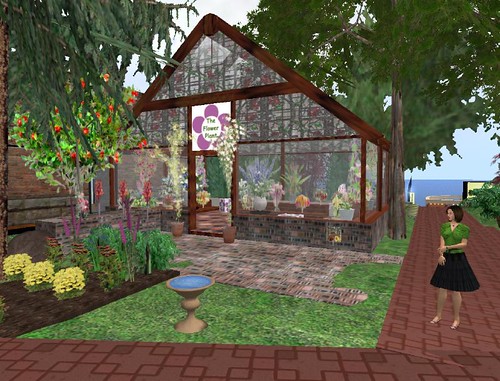
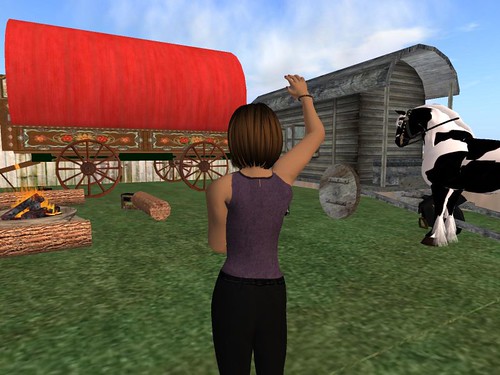
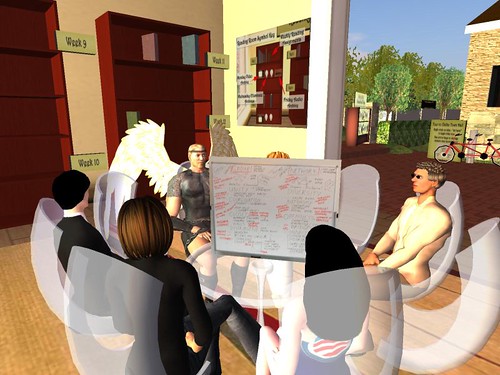
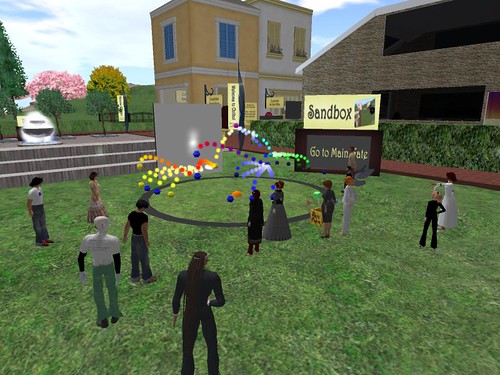
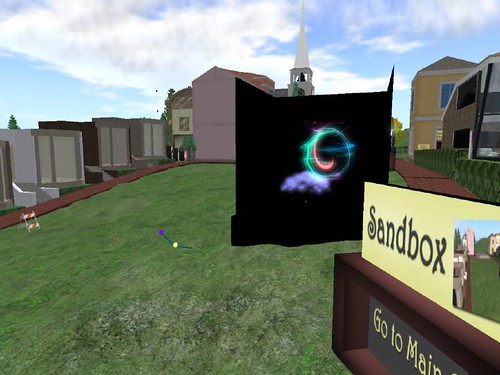
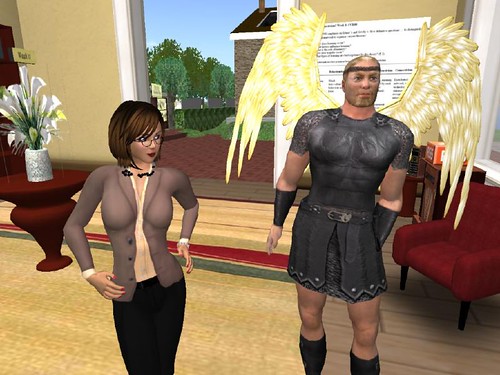
![Reblog this post [with Zemanta]](http://img.zemanta.com/reblog_c.png?x-id=030830c1-c72c-4e14-bd7b-81c98a6b96d5)
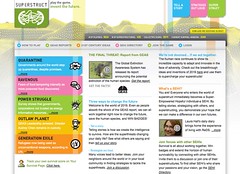


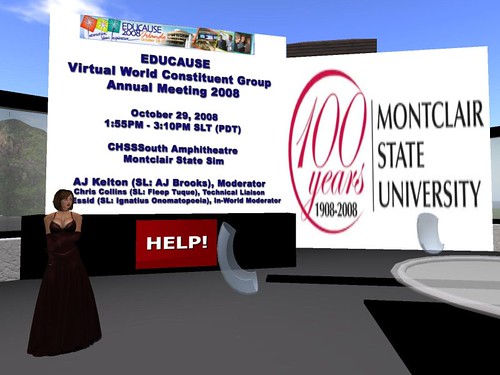

![Reblog this post [with Zemanta]](http://img.zemanta.com/reblog_c.png?x-id=e85dc174-518b-41d3-bb4f-ac1aefacaefe)
